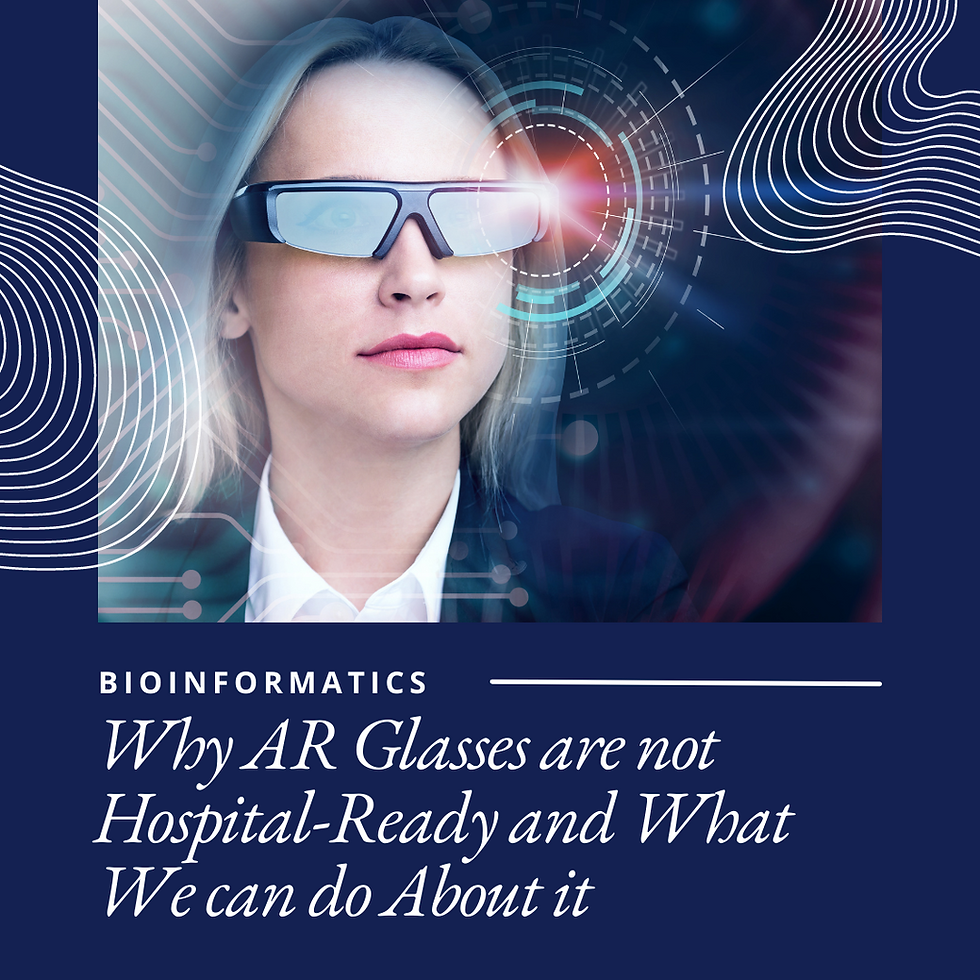Why AR Glasses are not hospital-ready: and what we can do about it
- Rishabh Gaur
- Apr 25, 2023
- 2 min read
Daniel Jung - Senior Editor, Bioinformatics and Cybersecurity
Date Published: 31 December, 2021

Augmented Reality Glasses are currently a hot topic in medical research, with many doctors/scientists coming up with clever ways to implement the feature into their work environment. From using Augmented Reality projections to show patient information when you’re talking to your patient, to using it to overlay body parts to help while a cardiothoracic surgeon is cutting you up, the potential capabilities are endless.
So why are they NOT hospital-ready?
I said such wonderful things about Augmented Reality glasses. So what makes them un-fit in their current state? Well, I need to be a bit more specific. There is a specific field of medicine called Radiology, where the doctors’ full-time job is to look at x-rays, and diagnose patients just from the image. For these doctors, diagnosing people with real diseases just by looking at images is their professional craft. As such, a super good monitor needs to be in place.
AR and the opacity issue
You see, the thing with AR glasses is, no matter what projections you put through them, by nature of them being glasses, light will always pass through. Now– what happens to an x-ray image, that used to have colors ranging from black and white and every shade of grey in-between, and just turn everything semi-transparent? You’re unable to get a ‘true’ black, and the shade of colors becomes significantly harder to distinguish. For doctors, this could mean that they accidentally miss spotting a cancer cell, due to the poor contrast. And a single misdiagnoses can determine life or death.
Putting scientists’ brains to work:
Understanding the problem of Augmented Reality glasses and their semi-transparency issues, a group of intelligent-minded people from Korea came up with an innovative solution: using a very special material called guest-host liquid crystal (GHLC), you can dynamically adjust the opacity of the lens by adjusting the voltage!
How does this solve the problem?
By having the flexibility to adjust the opacity of the AR glass lenses, we can look to implement this technology for radiologists by having glasses that act as “normal” glasses, until they’re ready to see images, in which case, they turn “on” the voltage to boost its opacity, allowing for better color contrast, and ultimately leading to better diagnoses compared to AR glasses without these technologies.
References
Jihyung Kim, Seung-won Oh, Jinyoung Choi, Sungeun Park & Wooksung Kim (2022) Optical see-through head-mounted display including transmittance-variable display for high visibility, Journal of Information Display, 23:2, 121-127, DOI: 10.1080/15980316.2021.2018058





Comments